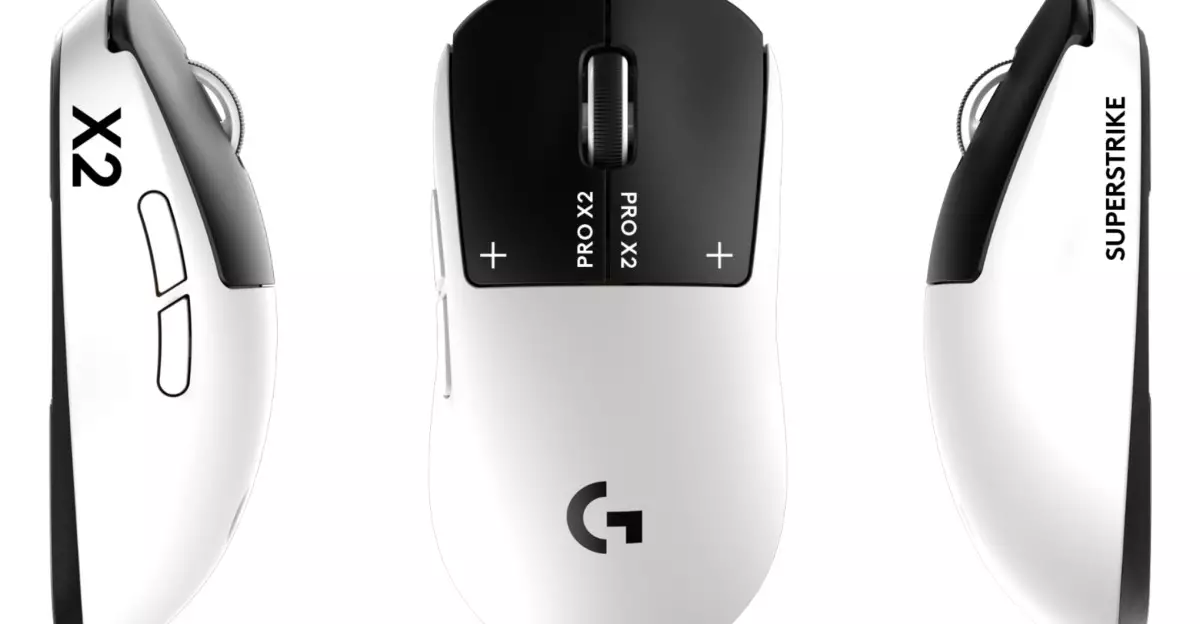In the rapidly evolving realm of gaming hardware, Logitech has once again positioned itself at the forefront of innovation with the introduction of the Pro X2 Superstrike. Unlike conventional gaming mice that rely solely on mechanical switches for click detection, the Superstrike employs groundbreaking analog sensors integrated with haptic feedback. This strategic shift from tangible mechanical switches to a sophisticated haptic system signifies a bold leap toward more immersive and responsive gaming experiences. It challenges long-standing assumptions that physical switches are the optimal means for input, inviting gamers to reconsider what precision and speed really mean in competitive play.
The core of this transformation lies in Logitech’s proprietary Haptic Inductive Trigger System (HITS). Rather than physically depressing a switch, the Superstrike’s buttons activate via a minimally traveled, 0.6mm inductive mechanism that relies on haptic actuators to simulate the sensation of a click. This design minimizes delay and maximizes responsiveness, giving players the potential to execute faster, cleaner inputs. The promise of up to a 30-millisecond latency reduction, combined with five customizable actuation points, underscores Logitech’s commitment to pushing the boundaries of what a gaming mouse can do. Here, latency isn’t just improved — it’s fundamentally redefined, potentially transforming how gamers perceive speed and control.
The Significance of Rapid Trigger and Customization
One of the most compelling features featured in the Superstrike is the inclusion of rapid trigger support. This is an unorthodox addition in gaming mice, traditionally associated with mechanical keyboards. Rapid trigger allows the sensor to reset almost immediately when the user lifts slightly on the button, enabling rapid succession of clicks with minimal effort. When coupled with the five configurable reset points accessible via Logitech’s G Hub software, the mouse offers unprecedented granular control over input timing. This level of customization means that gamers can tailor their clicking experience to match their specific playstyle, from ultra-fast FPS flicks to complex macros.
Despite skepticism over the utility of ultra-high polling rates for most users, Logitech’s choice to include an 8,000Hz polling rate highlights an ambition to optimize every millisecond. While many might question whether human reaction times can benefit from such a high frequency, for competitive gaming where margins are razor-thin, every aspect of latency matters. Whether this feature offers a perceptible advantage remains to be seen, but it undeniably signals Logitech’s intent to lead in performance innovation.
Design, Weight, and Market Position
Aesthetic and ergonomics are critical considerations in gaming mice, and Logitech’s Superstrike balances innovation with practicality. Weighing in at just 65 grams, it maintains a lightweight profile that reduces fatigue during prolonged gameplay sessions. The inclusion of the Hero 2 sensor, already proven in Logitech’s flagship mice, ensures precise tracking across various surfaces and demanding gaming scenarios. Wireless connectivity, via a 8,000Hz Lightspeed USB-A dongle, further enhances mobility and flexibility—though it’s designed for users comfortable with software configuration through G Hub.
Additionally, Logitech is rolling out the Superlight 2C, a more compact and slightly lighter iteration tailored for gamers with smaller hands or those who prioritize portability. At 51 grams, this version retains the core functionalities and performance specs of its larger sibling but in a more manageable form factor. It’s a strategic move to diversify appeal, acknowledging that comfort and fit are just as critical as raw technical capability when it comes to winning matches.
Implications for the Future of Gaming Mice
While some skeptics may dismiss the technological innovations embedded in the Superstrike as overkill, the broader implications are profound. Logitech’s venture into analog sensors combined with haptic feedback signals a potential paradigm shift — moving away from purely mechanical inputs toward more nuanced, customizable, and perhaps even tactile gaming interfaces. This evolution is likely to influence future designs, encouraging competitors to explore similar analog-haptic hybrid systems.
Furthermore, as the gaming community becomes increasingly competitive and performance-driven, hardware that offers each player an edge—whether real or perceived—will gain prominence. Logitech’s bold experimentation demonstrates a clear understanding that the definition of a “good gaming mouse” is expanding beyond simple click latency and DPI to include tactile feedback, customizable actuation, and ultra-fast responsiveness. It’s a sign that the industry is converging on a future where hardware feels as intuitive and immediate as the player’s intent.
In essence, the Superstrike, with its advanced analog and haptic feedback systems, isn’t just an incremental upgrade—it’s a declaration that gaming peripherals must evolve into more sophisticated, immersive tools. Whether these innovations will redefine competitive play or remain niche enhancements remains to be seen, but one thing is clear: Logitech’s vision for a faster, more tactile, and highly customizable mouse is a harbinger of what’s to come in the next era of gaming perfection.


Leave a Reply